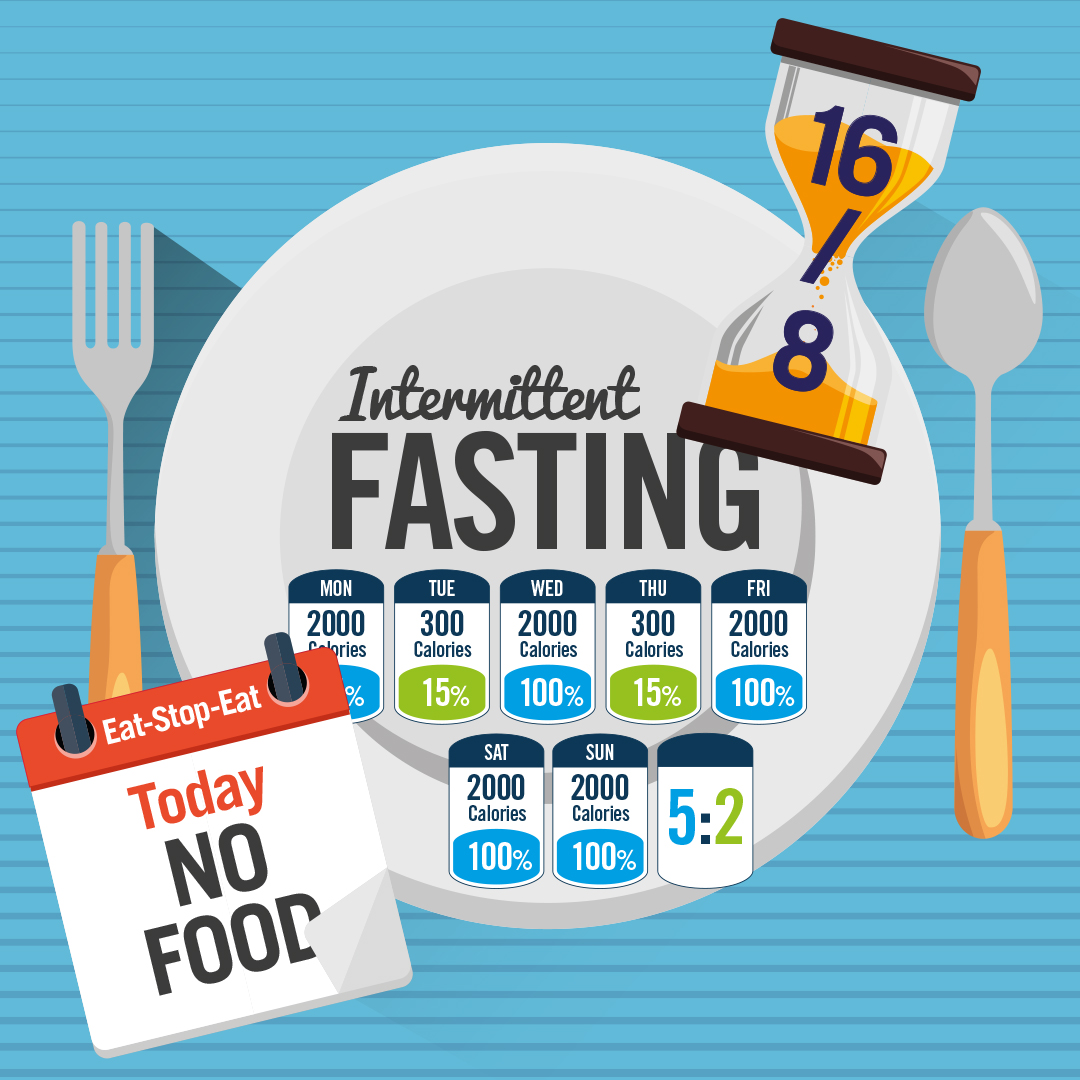One foot in ancient religious practice, one in modern eating and dieting trends, intermittent fasting (IF) – giving up food for set periods of time in the day or week – is having its moment. Whether it’s weight loss, longevity or cardiovascular health you’re after, IF is said to reap big, and more importantly, sustainable health rewards. So, what’s it all about?
Unlike most diets, IF isn’t about what you eat so much as when you eat. It’s about establishing a long-term eating pattern that cycles between periods of eating and fasting. Forget about food groups or forbidden luxuries. With IF you get to eat pretty much what you want – within reason. It’s the hours or days fasting that slash the calories.
How do I do it?
IF comes in plenty of shapes, so if one isn’t right for you, try another.
Here are some of the most popular:
The 5:2
As it says on the can, with the 5:2 you eat normally for five days and ‘fast’ for the other two, although not on consecutive days. On ‘fast’ days, men get to eat about 600 calories, women 500, and it’s entirely up to you how or when you take them. One common approach is to fast on Mondays and Thursdays, dividing your calories between three small meals.
16/8
16/8 IF means restricting your eating to an eight-hour window and fasting during the other 16. You can do it as often as you like. Some people do it for one or two days a week, for others it’s daily.
A popular choice is between noon and 8pm – so you fast while you sleep and skip breakfast but eat a healthy lunch and dinner. Others prefer 9-5, which means you can stoke up on breakfast at nine, lunch at noon then an early dinner or snack at four.
Eat-stop-eat
Not so very different from the 5:2, eat-stop-eat involves normal eating most of the week, interspersed with 24 hours of fasting, either once or twice a week. Unlike the 5:2, the idea is to abstain from all food during the fast – slaking your thirst with water, tea or diet soda.
What are the health benefits?
Research is a little light, but early results are intriguing. First up, many people find IF easier to swallow than a fad diet. You don’t have to upend your life, just drop a few meals during fast times. In addition to weight loss, and all its associated benefits, there is some evidence that IF improves brain function – including concentration and awareness – as well as boosting cardio-vascular health. Studies on mice also suggest that fasting can increase longevity.
And the downside?
Although we humans have fasted safely for thousands of years, IF isn’t for everybody. Some find the fasting too tough, others get headaches, dizziness, irritable or prone to mood swings. It should be avoided by people with diabetes, pregnant women and those with eating disorders. It can also be tricky to fit in with a hectic social calendar. There can also be a temptation to gorge on your non-fasting days – which is likely to cancel out the benefits.
Tips for those hungry times
When you start out fasting, at some point, you’re going to get hungry. If you’re totally new to fasting, your body is unused to feeling seriously hungry – normally you’d reach for a snack. These hunger pangs are a sign that your blood glucose is falling. Ordinarily, these feelings – which are nothing to worry about – will pass quite quickly. Remember – we humans are evolved to survive lean times. But if you’re struggling here are a few tips:
- Try to keep busy – it can really help to distract yourself from feelings of hunger
- Keep exercise light when you’re fasting – your body will crave more fuel
- Get plenty of rest – focus on getting a good night’s sleep. Consider taking short naps during the day
- Keep hydrated – but avoid maxing out on the caffeine


















